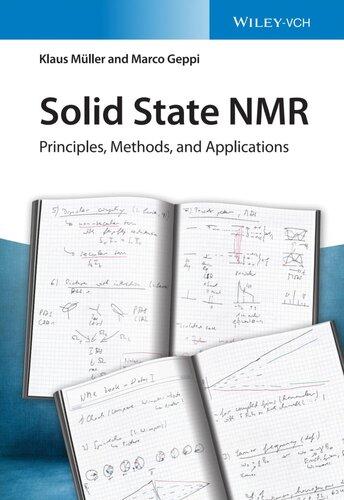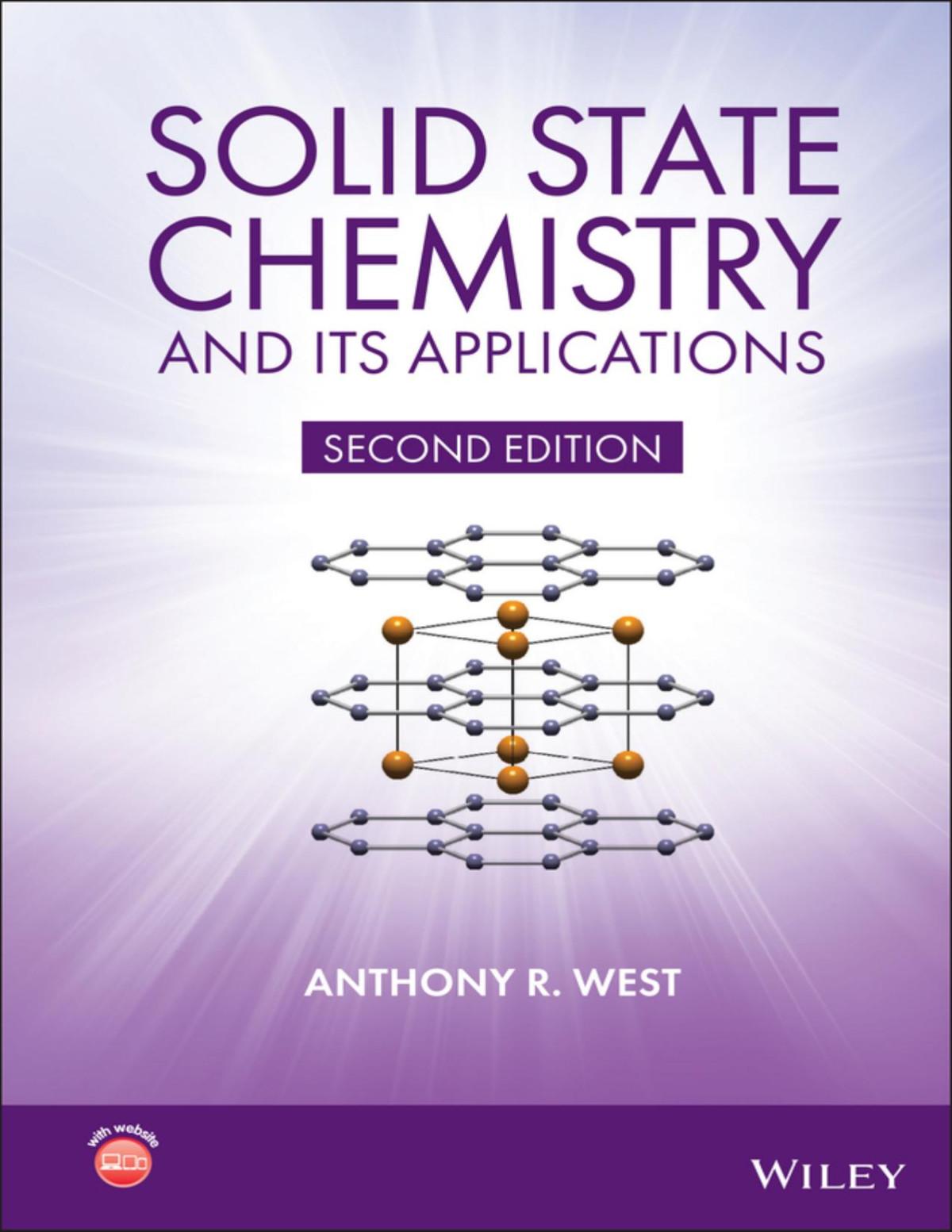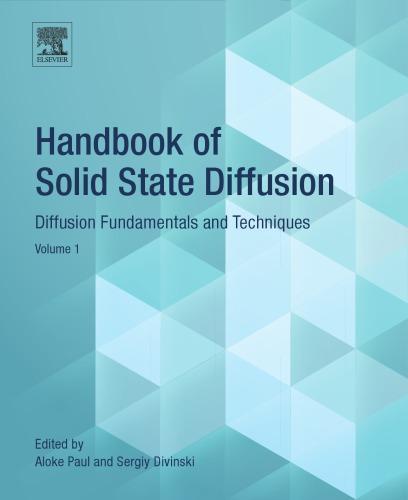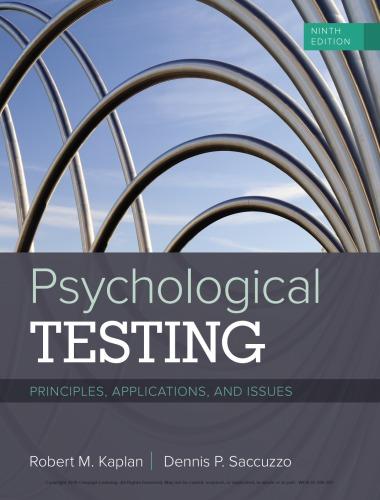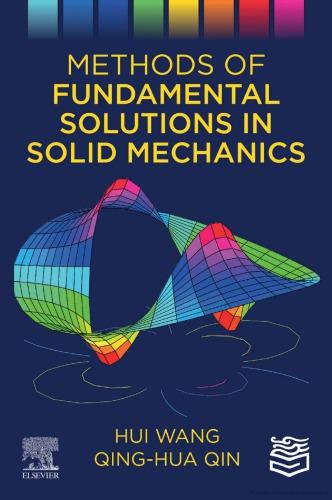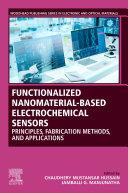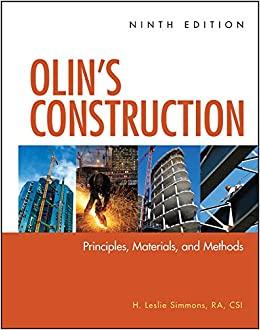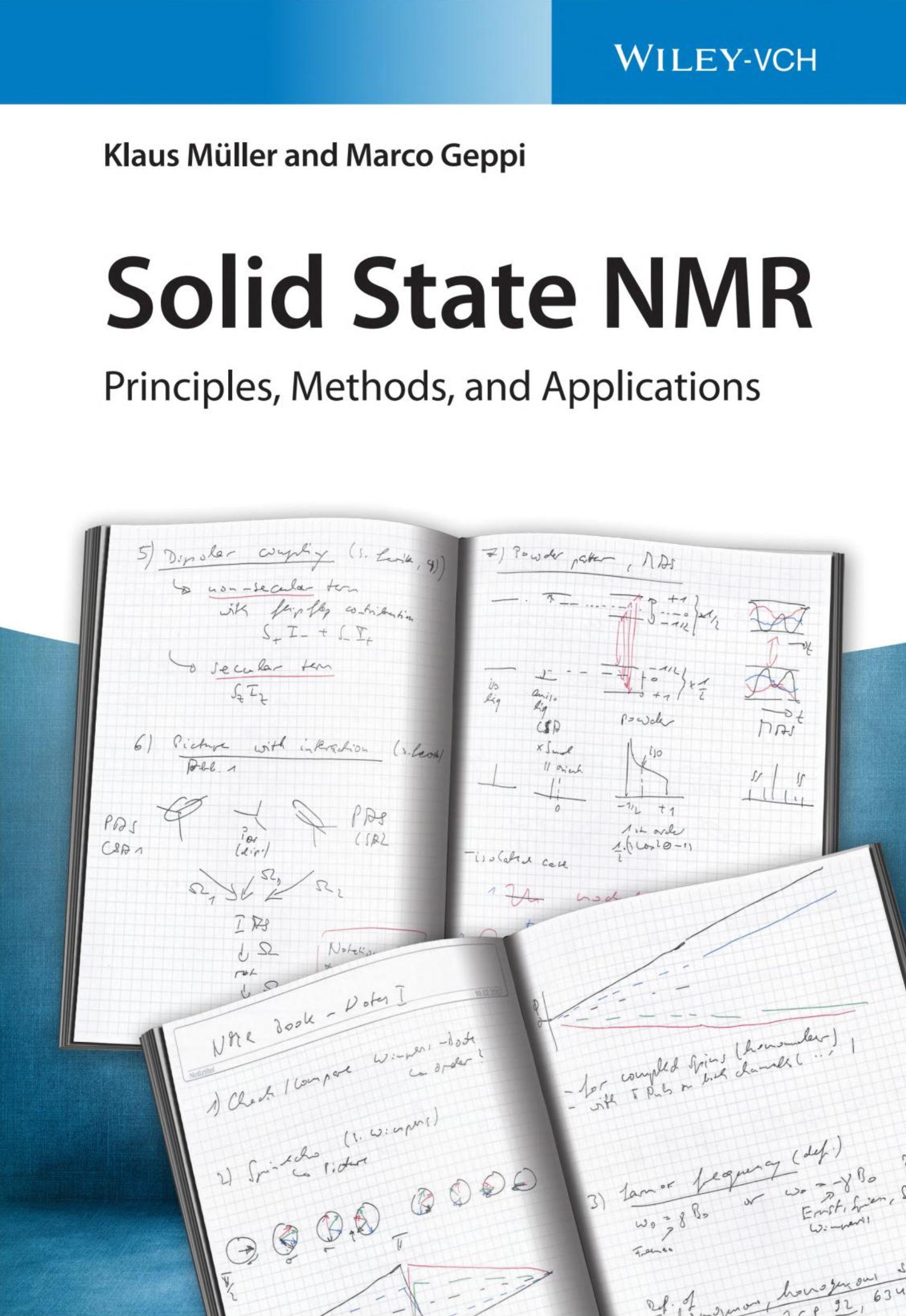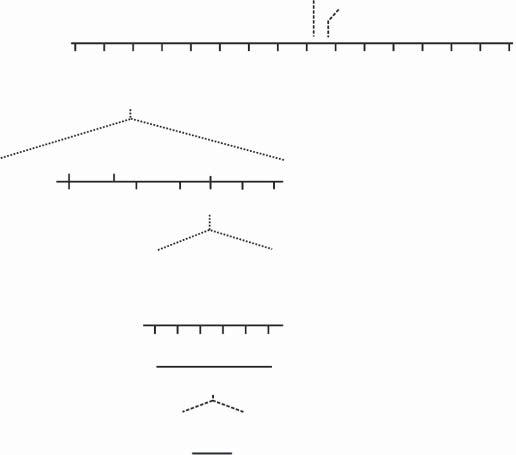SolidStateNMR
Principles,Methods,andApplications
KlausMüller MarcoGeppi
FigureseditedbyBeatriceOmiecienski
Authors
ProfessorKlausMüller† Univ.degliStudidiTrento FacoltàdiIngeneria ViaMesiano77 FacoltàdiIngeneria 38100Trento Italy
ProfessorMarcoGeppi UniversitàdiPisa DipartimentodiChimicaeChimica Industriale v.G.Moruzzi13 56124Pisa Italy
CoverImages: background:Blueinterior @Gettyimages#174765643/sbayram; mainmotive:bookswithhandwritten notesfromProf.Müller@Beatrice Omiecienski
Allbookspublishedby WILEY-VCH arecarefullyproduced.Nevertheless, authors,editors,andpublisherdonot warranttheinformationcontainedin thesebooks,includingthisbook,to befreeoferrors.Readersareadvised tokeepinmindthatstatements,data, illustrations,proceduraldetailsorother itemsmayinadvertentlybeinaccurate. LibraryofCongressCardNo.: appliedfor
BritishLibraryCataloguing-in-Publication Data
Acataloguerecordforthisbookis availablefromtheBritishLibrary.
Bibliographicinformationpublishedby theDeutscheNationalbibliothek TheDeutscheNationalbibliotheklists thispublicationintheDeutsche Nationalbibliografie;detailed bibliographicdataareavailableonthe Internetat <http://dnb.d-nb.de>
©2021WILEY-VCHGmbH,Boschstr. 12,69469Weinheim,Germany
Allrightsreserved(includingthoseof translationintootherlanguages).No partofthisbookmaybereproducedin anyform–byphotoprinting, microfilm,oranyothermeans–nor transmittedortranslatedintoa machinelanguagewithoutwritten permissionfromthepublishers. Registerednames,trademarks,etc. usedinthisbook,evenwhennot specificallymarkedassuch,arenotto beconsideredunprotectedbylaw.
PrintISBN: 978-3-527-31816-2
ePDFISBN: 978-3-527-69010-7
ePubISBN: 978-3-527-69011-4
oBookISBN: 978-3-527-69009-1
Typesetting Straive,Chennai,India
Printedonacid-freepaper
10987654321
toKlaus
Contents
Foreword xiii
Preface xv
Foreword xvii
1IntroductoryNMRConcepts 1
1.1HistoricalAspects 1
1.2BasicDescriptionofNMRSpectroscopy 5
1.2.1NuclearSpinsandNuclearZeemanEffect 8
1.2.2SpinEnsembles 11
1.2.3SinglePulseExperiment,BlochEquations,andFourier Transformation 17
1.2.4PopulationsandCoherences 27
1.3Liquid-stateNMRSpectroscopy:BasicConcepts 29
1.3.1ChemicalShift 29
1.3.2IndirectSpin–SpinCouplingandSpinDecoupling 32
1.3.3NuclearSpinRelaxation 38
1.3.4NuclearOverhauserEffect 44
1.4Liquid-stateNMRSpectroscopy:SomeExperiments 47
1.4.1RelaxationExperiments 47
1.4.2InsensitiveNucleiEnhancedbyPolarizationTransfer 53
1.4.32DNMRSpectroscopy 53
1.4.4ChemicalExchange 57
1.5SolidMaterialsandNMRSpectroscopy 63 References 69
2MathematicalandQuantum-mechanicalTools 73
2.1DefinitionsandBasicConcepts 73
2.1.1OperatorsandFunctions 73
2.1.2EigenvalueEquations 74
2.1.3EigenstatesandSuperpositionStates:PureandMixedEnsembles 75
2.1.4NuclearSpinandAngularMomentum 76
2.2RotationsandFrameTransformations 77
2.2.1ActiveandPassiveTransformations 78
2.2.2RotationOperators 78
2.2.3RotationMatricesandEulerAngles 79
2.3Time-IndependentFeatures:EnergyLevelsandRelatedAspects 81
2.3.1Time-IndependentSchrödingerEquationandSpinHamiltonians 81
2.3.2Time-IndependentPerturbationTheory 81
2.3.3MatrixRepresentationofOperatorsandDensityMatrixTheory 83
2.3.3.1IsolatedNucleuswithSpin1/2 84
2.3.3.2IsolatedNucleuswithSpin1 87
2.3.3.3PairofCoupledNucleiwithSpin1/2 87
2.3.4SpinTemperature 89
2.4DealingwithTimeDependence 90
2.4.1Time-DependentSchrödingerandLiouville–vonNeumann Equations 90
2.4.2AverageHamiltonianTheory 91 References 93
3NuclearSpinInteractions 95
3.1Introduction 95
3.2InteractionswithExternalMagneticFields 97
3.3InternalInteractions 100
3.3.1ShieldingorChemicalShiftInteraction 100
3.3.2KnightShiftInteraction 105
3.3.3QuadrupolarInteraction 106
3.3.4DipolarCoupling 112
3.3.5IndirectSpin–Spin(J )Coupling 116
3.3.6ParamagneticCoupling 117 References 119
4BroadlineNMRSpectroscopy 121
4.1IntroductoryRemarks 121
4.2FinitePulseDurationandAdiabaticPulses 133
4.2.1FinitePulseDuration:ExcitationProfileandSpectralDistortions 133
4.2.2AdiabaticPulses 138
4.3InhomogeneousandHomogeneousLineBroadeningMechanisms 141
4.4DiluteSpin-1/2Nuclei 142
4.4.1BroadlineNMRSpectra 142
4.4.2Cross-polarization 149
4.4.2.1PulseSequenceandHartmann–HahnConditions 149
4.4.2.2CPExplainedbyAHT 151
4.4.2.3CPExplainedbytheThermodynamicModel 157
4.4.2.4CPDynamics 160
4.4.2.5CP-relatedTechniques 167
4.4.3HeteronuclearSpinDecoupling 169
4.4.3.1CWHeteronuclearSpinDecouplingExplainedbyAHT 171
4.4.3.2BeyondCW:Off-resonanceEffectsandPulseDecouplingSchemes 172
4.4.4EchoExperiments 176
4.5AbundantSpin-1/2Nuclei 184
4.5.1BroadlineNMRSpectra 184
4.5.2SpinDiffusion 187
4.5.2.1Fick’sEquationofDiffusion 187
4.5.2.2TheGoldman–ShenExperiment 189
4.5.2.3InfluenceofSpinDiffusiononSpin-LatticeRelaxationTimes 191
4.5.3MomentAnalysis 192
4.5.4EchoExperimentsforRefocusingtheHomonuclearDipolar Interaction 194
4.5.4.1SolidEcho 194
4.5.4.2Magic-sandwichEcho 197
4.6QuadrupolarNuclei 200
4.6.1BroadlineNMRSpectra 200
4.6.2SelectiveandNon-selectiveRFPulses 205
4.6.3Cross-polarization 209
4.6.4EchoandSensitivityEnhancementExperiments 210
4.6.4.1QuadrupolarEcho 210
4.6.4.2SolomonandHahnEchoes 211
4.6.4.3QuadrupolarCarr–Purcell–Meiboom–Gill 218
4.6.4.4OtherSensitivityEnhancementTechniques 219 References 224
51DHigh-resolutionSolid-stateNMRSpectroscopy 227
5.1DiluteSpin-1/2Nuclei 227
5.1.1SampleRotation 228
5.1.2SpinningSidebandSuppression 236
5.1.3HeteronuclearSpinDecouplingandSampleSpinning 244
5.1.4Cross-polarizationandSampleSpinning 257
5.1.5BasicPulseExperimentsUnderMASConditions 268
5.1.5.1PulseSequencesfortheMeasurementofRelaxationTimes 269
5.1.5.2PulseSequencesforSpectralEditing:DistinguishingComponentswith DifferentDynamicProperties 270
5.1.5.3PulseSequencesforSpectralEditing:DistinguishingRareNucleiWith DifferentChemicalBonds 271
5.1.5.4PulseSequencesforQuantitativeDeterminations:CP vs SPE 273
5.2AbundantSpin-1/2Nuclei 275
5.2.1SampleRotation 275
5.2.2MultiplePulseExperiments 275
5.2.3CombinedPulseandSampleRotationExperiments 282
5.3QuadrupolarNuclei 289
5.3.1SampleRotation 289
5.3.2IntegerSpinNuclei 290
x Contents
5.3.3Half-integerSpinNuclei 291
5.3.3.1CTSpectra 294
5.3.3.2DoubleAngleRotation 297
5.3.3.3SatelliteTransitionSpectroscopy 300
5.3.4SensitivityEnhancement 301 References 305
62DSolid-StateNMRSpectroscopy 309
6.1BasicConcepts 311
6.1.1BasicStructureof2DExperiments 311
6.1.2NeedforRecoupling 313
6.1.3Double(Multiple)QuantumSpectroscopy 316
6.2ExperimentsBasedonChemicalShiftAnisotropy 317
6.2.1MAH,MAT,5-π,andRelatedExperiments 318
6.2.2STAG,S3 ,SASS 321
6.2.3VACSY 322
6.2.4TOSS–ReverseTOSSand2D-PASS 322
6.2.5CSAAmplificationMethods 324
6.2.6PulseSequencesRecouplingChemicalShiftAnisotropy 326
6.2.7PulseSequencesforAbundantSpin-1/2Nuclei 326
6.2.8RotaryResonance(RR) 328
6.3ExperimentsBasedonHeteronuclearDipolarCoupling 329
6.3.1HeteronuclearCorrelationThroughDipolarInteraction 330
6.3.2SeparatedLocalField(SLF) 333
6.3.3RotaryResonanceRecoupling(R3 ) 337
6.3.4REDOR 337
6.3.5REAPDORandTRAPDOR 348
6.3.6TEDOR 352
6.3.7HARDSHIP 354
6.4ExperimentsBasedonHomonuclearDipolarCoupling 355
6.4.1WISE 355
6.4.2RotationalResonance(R2 ) 358
6.4.3BroadbandHomonuclearDipolarRecoupling 360
6.4.3.1DRAMAandMELODRAMA 362
6.4.3.2RFDRandSEDRA 365
6.4.3.32Q-HORROR,MSD-HORROR,andDREAM 366
6.4.3.4BABA 370
6.4.3.5Symmetry-basedRecouplingSchemes:C7andPOST-C7 370
6.4.3.6DipolarTruncationandHigh-orderRecouplingSchemes 371
6.4.4HomonuclearCorrelationThroughDipolarInteraction 372
6.5ExperimentsBasedon J -coupling 375
6.5.1HeteronuclearCorrelationThrough J -coupling 376
6.5.2HomonuclearCorrelationThrough J -coupling 378
6.6ExperimentsBasedonQuadrupolarInteraction 380
6.6.1Nutation 380
6.6.2DAHandDAS 381
6.6.3MQMAS 384
6.6.4STMAS 388 References 391
7MolecularDynamicsbySolid-StateNMR 397
7.1ExperimentalObservablesandMotionalTimescales 399
7.1.1SpectralLineshapes 399
7.1.1.1High-ResolutionSpectra 400
7.1.1.2PowderSpectra 401
7.1.1.3SpectraAcquiredby“Exchange”Experiments 403
7.1.2RelaxationTimesinSolids 404
7.1.2.1Spin–SpinRelaxationTimes 406
7.1.2.2Spin–LatticeRelaxationTimesofAbundantNuclei 409
7.1.2.3Spin–LatticeRelaxationTimesofRareNuclei 410
7.1.2.4DipolarandQuadrupolarSpin–LatticeRelaxationTimes 411
7.1.2.5TheoryofRelaxation 412
7.1.3AbsoluteFrequencyRegimes 416
7.2MotionalModels 419
7.2.1ModelsforLineshapeAnalysis 419
7.2.2SpectralDensities 422
7.2.3DependenceofCorrelationTimesonTemperature 423
7.3BroadlineExperiments 424
7.3.1Acquisitionof1DSpectra 425
7.3.2MeasurementofRelaxationTimes 426
7.3.2.1Spin–SpinRelaxationTimes,FIDAnalysis,andDQTechniques 426
7.3.2.2Spin–LatticeRelaxationTimes 432
7.3.3OtherTechniques 435
7.3.3.1StationaryStimulatedEcho 436
7.3.3.22DExchange 436
7.3.3.3SpinAlignment 437
7.4High-ResolutionExperiments 438
7.4.1Acquisitionof1Dand2DSpectra 438
7.4.1.11DChemicalExchange 438
7.4.1.2LineBroadeningfromInterferences 439
7.4.1.3Lineshapesfrom2DExperiments 440
7.4.2MeasurementofRelaxationTimes 440
7.4.2.1AbundantNuclei 440
7.4.2.2RareNuclei 441
7.4.3OtherTechniques 442
7.4.3.12DChemicalExchange 442
7.4.3.21Dand2DExchangeofSpinningSidebands 442
7.4.3.3CODEX 443
References 444
8ApplicationofSSNMRtoSelectedClassesofSystems 447
8.1Pharmaceuticals 447
8.1.1Introduction 447
8.1.2Polymorphs,Solvates,andSalts 449
8.1.3MolecularComplexesandCocrystals 454
8.1.4NMRCrystallography 456
8.1.5MolecularDynamics 459
8.1.6DisorderedandAmorphousForms 461
8.1.7IdentificationofAPIFormsinFormulations 461
8.1.8MiscibilityandInteractionsinDrugFormulationsandDispersions 463
8.2PolymericMaterials 465
8.2.1Introduction 465
8.2.2PrimaryStructure 466
8.2.3SecondaryandTertiaryStructure 466
8.2.4PhaseProperties 470
8.2.4.1Polymorphism 470
8.2.4.2Heterophasicity 470
8.2.4.3PhaseTransformations 474
8.2.5InterfacesandDomainDimensions 474
8.2.6MolecularDynamics 479
8.2.6.1MotionsinGlassyandCrystallinePhases 480
8.2.6.2MotionsinRubbersandMelts 481
8.3InorganicandOrganic–InorganicMaterials 485
8.3.1Introduction 485
8.3.2InorganicSystems 486
8.3.2.1Silicates 486
8.3.2.2Zeolites 489
8.3.2.3Aluminophosphates 491
8.3.2.4AmorphousMaterials:Cements,Geopolymers,andGlasses 493
8.3.3Organic–InorganicMaterials 497
8.3.3.1OrganometallicComplexes 497
8.3.3.2Metal–OrganicFrameworks 500
8.3.3.3OrganicallyModifiedFillersandPolymer/FillerComposites 502
8.4LiquidCrystalsandModelMembranes 507
8.4.1Introduction 507
8.4.2MesogensandMesophases 507
8.4.3SSNMRTechniquesforInvestigatingMesophases 511
8.4.4OrientationalOrder 515
8.4.5PhaseStructure 519
8.4.6MolecularDynamics 523 References 525
Index 531
Foreword
KlausMüllerstudiedChemistryattheUniversityof Freiburg(1975–1981)andreceivedhisdoctoratedegree inDecember1985withProf.KotheattheUniversityof Stuttgartandhispostdoctorallecturequalificationin1993. From1999to2009,hetaughtasaProfessorattheInstituteof PhysicalChemistryatthesameuniversity.Ashecommitted himselftothepromotionofresearchandteachingwithgreat dedication,inthese10years,hesupervised16PhDtheses,4 postdocs,andseveraldissertationswithinhisownresearch group,aswellastheGerman-FrenchDoubleDiploma(a studycourseinChemistry).Forthepostgraduatecourseoflectures“MagneticResonance”(1998–2007),hewasseenasatowerofstrength.
Müllerwasbothanexpertandinternationallysought-aftercooperationpartner intheareaofsolid-stateNMR,whereheexaminedbothbio-membranesand host–guestcompounds,ceramics,andmaterialsofanykind.Forhismultiple,often groundbreakingideas,hewasinvariablyanassetandmotivation.
HeacceptedaProfessorshipattheUniversityofTrentoon1January2009.Atthis particulartime,hewasalreadywritingthistextbook.Fromtheverybeginning,I waspermittedtoproducethefiguresforthisprojectandcouldthereforecontinually followthedevelopments.Hehadthegifttoawakenaveryspecialcuriosityandhis enthusiasmforthisprojectcapturedmetoo.
AsKlausMüller–incomprehensiblyforallofus–totallyunexpectedlypassed awayon1April2011attheageofonly55years,heleftbehindhismanuscript.From theinitial,unimaginableideatocompletethisbook,asalreadysomuchtimeand energyhadbeenputintothesepages,atime-consumingtaskdeveloped.Ittookme alongtimetofindanadequatecoauthor.
ThereforeIextendmyveryspecialthankstoDr.MarcoGeppi,whometthechallengeandintenselyinspectedtheexistingmanuscript.Hebroughtalotoftimeand effortincreatingthemissingchaptersandcompletedthisbookinthespiritofKlaus Müller.
xiv Foreword
WealsowanttothankSilviaGrossaswellasPhilipp,Oliver,andGiuliaMüller forallowingbothofustobecontributorsandWiley-VCHaspublishertherightsto continueKlausMüller’sworkandtofinishthebook.
BeatriceOmiecienski Stuttgart2020
Preface
Writingthisbookwasoneofthemostdifficult(andlong)tasksofmyprofessional life,andwritingthisprefaceisprobablyevenmoredifficultthantherestofthebook.
ThisbookwasconceivedandpartiallywrittenbyKlausMüller,averygoodfriend ofmine,severalyearsago.Itwashisproject.Iwastoldafterhepassedawaythathe usedtoputaspecialloveinteaching,andIcouldclearlyfindsuchaloveintheparts ofthebookhedeveloped.AfewyearsafterKlausdeparture,Silviatoldmeabout thisbookandaskedmeifIwaswillingtocompleteit.Icouldnotrefuse,forSilvia andthelittleGiulia,andespeciallyforKlaus.AndIcouldn’tformyself,too.
KlausandIalwaystoldeachother,“Wehavetodosomethingtogether.”Wewere sharingresearchsubjects,approachestoresearch,views,andvalues.Inaddition, itwasapleasuretostaytogether.AfterhemovedtoTrento,andespeciallyduring WWMR2010inFlorence,wedraftedtogethercommonprojectsinvolvingGIDRM and,inparticular,thesmallItaliansolid-stateNMRcommunity.However,noneof ourprojectshadthetimetostart,andwenevereffectivelydidanythingtogether beforehispassingon1April2011.Thiswasafewdaysafteraphonecallduring whichweagreedonthetitleofhistalktoaworkshopsupposedlyinPisaacoupleof monthslater.
Completinghisbook,transformingitinourbook,wasanunexpectedchanceto dosomething,andsomethingveryimportant,togetherforthefirsttime.
Now,afterthehugeeffortdonetounderstand,develop,integrate,andcomplete thisbook,Iamveryhappytoseeournamestogether,knowingthatIdidmybestto honorandrememberhimandtovaluehiswork.IhopethatSilviaandBeatricewill alsobehappyforthecompletionofthiswork,althoughittookmuchlongerthan theyprobablyexpected.
IalsohopethatKlauswillforgivemeforthemanypartsofthebookthatpossibly cameoutdifferentfromhisinitialideaorfromhowhecouldhaverealizedthem. ButIamsurethathewouldbehappythatfinallywewereabletodo“something together.”
Pisa2020
MarcoGeppi
MarcoGeppiobtainedhisdegreeinChemistryin1991attheUniversityofPisa, Italy,workingon 2 HNMRstudiesofmoleculardynamicsinliquidcrystals,andhis PhDinChemistryin1997attheScuolaNormaleofPisa,workingonsolid-state NMRofpolymericmaterials,withprofessorsC.A.VeraciniandF.Ciardellias supervisors.PartofhisPhDresearchwascarriedoutattheUniversityofDurham, UnitedKingdom,underthesupervisionofProf.R.K.Harris.In2001hebecamea researcherand,in2014,associateprofessorinPhysicalChemistryattheDepartmentofChemistryandIndustrialChemistryoftheUniversityofPisa,whereheis nowleaderofthesolid-stateNMRspectroscopygroupandlaboratory,andteacher ofPhysicalChemistry,Spectroscopy,andsolid-stateNMR.In2015hewasawarded theGIDRM/GIRMgoldmedal.Since2017hehasbeenpresidentoftheItalian DiscussionGrouponMagneticResonances(GIDRM).Hisresearchinterestsmainly concerntheapplicationofNMRtechniquestoavarietyofsolidmaterials,including polymers,biopolymers,pharmaceuticals,inorganics,organic–inorganichybrids andcomposites,andsoftmatter(e.g.liquidcrystals,gels,modelmembranes). HeisalsoinvolvedinthedevelopmentofexperimentalanddataanalysisNMR techniques,aswellasofNMRsoftwares,mainlydevotedtostudiesonnuclear spinrelaxationandmoleculardynamics.Hehasbeenscientificmanagerofseveral contractswithchemicalindustriesandofItalianandinternationalscientific projects.Hehascoauthoredover140researcharticlesonNMRspectroscopy.
Introduction
Beyondthehorizonoftheplacewelivedwhenwewereyoung Inaworldofmagnetsandmiracles Ourthoughtsstrayedconstantlyandwithoutboundary . Runningbeforetimestookourdreamsaway Leavingthemyriadsmallcreaturestryingtotieustotheground Toalifeconsumedbyslowdecay (HighHopes–PinkFloyd)
Discoveredbyphysicistsandwidelyappliedinchemistry,NuclearMagneticResonance(NMR)isaphenomenonthatnowadaysfindsacrucialimportanceinmost fieldsofnaturalscience(chemistry,biology,physics,pharmacy,agriculture,materials,earth,andenvironmentalscience)aswellasinmedicineandengineering. Commonbasicprinciplesconcerningthespinofatomicnucleianditsinteraction withradiowavesoriginatedthreemain,equallyimportant,experimentaltechniques,whichthroughtheyearsbecamemoreandmorespecialized:solution-state NMRspectroscopy,solid-stateNMRspectroscopy(towhichthisbookisdevoted), andmagneticresonanceimaging.Thelatterfindsitsmainfieldofapplicationin medicine,whereitisnowadaysofextraordinaryimportance.Solution-stateand solid-stateNMRspectroscopiesobviouslydifferonthephysicalstateofthesample underinvestigation.Althoughtheyarebothstrikinglyimportantinthesamefields, theyhavedifferentapplicationsandcanbecomplementary.Solution-stateNMR spectroscopyisgenerallyunrivalledinthedeterminationofunknownchemical structures,representingavitaltoolforchemists,althoughitsapplicationsarenot restrictedtothisfield.Theroleofsolid-stateNMRspectroscopyisbeyonddeterminingchemicalstructuresofinsolublesamples:italsoprovidespreciousanddetailed informationonconformations,molecularpacking,intermolecularinteractions, polymorphism,structuralorder/disorder,moleculardynamics,andaveragephase
domaindimensions,i.e.on“microscopic”propertiesthatarecrucialindefining themacroscopicbehaviorofamaterial.Moreover,itshowsvirtuallynolimitson thetypeofanisotropicphasetobeinvestigated,whichcaneitherbecrystallineor amorphous,solidorsoft.Forthesereasons,solid-stateNMRspectroscopyisoneof themostpowerfulandversatiletechniquesforthecharacterizationofmaterials.
Asaphysicochemist,mymaininterestinNMRingeneral,andsolid-stateNMR spectroscopyinparticular,stemsfromitsnaturalpositionbetweentheoryand experimentsasthesecontinuouslysuperimposeandapplyinNMRandthroughout thisbook.However,asitwasforKlaus,myapproachtoNMRspectroscopyismostly experimental.Inthisbookthetheoreticaldescriptionoftheconceptsisalways directedtoabetterunderstandingofthetechniques,theirapplications,and,finally, theinterpretationoftheexperimentalresults.
Solid-stateNMRspectroscopyisafieldtoolargeandvariedtobeexhaustively coveredinasinglebook.Hereweaimedatgivingtheessentialtoolstograduate andPhDstudentsandtonoviceresearchersinthefield.Moreover,wewantedto presentthepossibleapplicationsofsolid-stateNMRspectroscopytoresearchersof otherfields,whocouldfindthemusefultoexploitthistechniquefortheirstudies.
Thebookispermeatedbytheconceptsofanisotropyoftheinternalnuclearinteractionsandofpeculiarlinebroadeningmechanismsandrelaxationbehavioroccurringinsolidsand,moreingeneral,inanisotropicphases,alsoincludingsoftmatter. Ononehand,theseconceptsaretreatedincontrasttosolution-stateNMR,determiningwhyandhowincomparisonsolid-stateNMRistheoreticallyandexperimentally morecomplex,but,potentially,arichersourceofinformation.Ontheotherhand, theimplicationsofsuchconceptsonbothlow-andhigh-resolutionsolid-stateNMR experimentsandontheirapplicationsaredealtwithindetail.Furthermore,wepresentedanddescribedmanyusefulpulsesequences(both1Dand2D),andwetackled thecrucialaspectofmoleculardynamics,inattemptstodescribetheirinfluenceon nuclearpropertiesandtoprovideacompletesurveyoftheNMRtechniquesthat allowtheircloseinvestigation.Severalsubjects,whicharecertainlyveryimportant inthecurrentresearch,couldnotbetreatedhere,concerningtheoreticalaspects(e.g. Floquettheory),techniques(e.g.DynamicNuclearPolarization,DNP),andapplications(e.g.structuralbiologystudies),forwhichthereadershouldrefertomore specializedbooksorscientificliterature.
Thisbookconsistsofeightchapters.Chapter1isbothasummaryofthemain conceptsatthebasisofsolution-stateNMRandanintroductiontotheworldof solid-stateNMR.InChapter2,themainmathematicalandquantum-mechanical toolsnecessarytounderstandthefollowingsubjectsarebrieflytreated.Chapter 3containstheformaldescriptionofthemainexternalandinternalnuclearspin interactionsandtheireffectsonnuclearenergyspinlevels.Chapters4and5are devotedtoone-dimensionalstaticandMagicAngleSpinning(MAS)approaches, respectively:ineachchapterthemainconceptsaredealtwithfromboththeoretical andexperimentalstandpointsandadescriptionofthemostimportantexperimental techniquesispresent,followingadivisionamongdilutespin 1/2,abundantspin 1/2, andquadrupolarnuclei.Chapter6treatstwo-dimensionalsolid-stateNMRspectroscopy,providingadescriptionofthemainconceptsandthemainexperiments, dividedbytypeofexploitedinteraction:chemicalshift,hetero-andhomonuclear dipolar,indirectspin–spin,andquadrupolar.Chapter7isentirelydedicatedto
moleculardynamics:theoreticalandexperimentalaspectsofthemanyNMR quantitiesusefulinthisfieldarediscussed,highlightinginparticularthedifferent motionaltimescalesinvolvedandtheprocedurestoextractmotionalparameters. Finally,Chapter8dealswiththeapplicationofsolid-stateNMRtoseveralimportantclassesofmaterials:pharmaceuticals,polymers,inorganics,organometallic complexesandorganic–inorganichybridsandcomposites,andsoftmatter.
Manypeoplehavetobeacknowledgedfortheircontributionstothisbook.First ofall, BeatriceOmiecienski,whowastheonlypersonwhotookpartinallthe phasesofthiswork,representing,bothideallyandinpractice,thebestpossible bridgebetweenKlausandme.Withoutherextraordinaryandtirelesscommitment throughouttheseyears,andwithoutherfiercedeterminationindoingeverything shecouldtocompleteKlaus’soriginalproject,thisbookwouldnotexist.She constantlyappliedherskillsandpatience,supportingbothKlausandmeinmany aspectsand,inparticular,byediting,revising,andadaptingallthemanyfiguresof thisbook.
Iowemyspecialfriend AlanKenwright fortherestofmylifeforhisdedicationto greatlyimproveboththescientificcontentandEnglishlanguageofthewholebook.
Iamdeeplygratefulto LuciaCalucci, SilviaBorsacchi, ElisaCarignani, FrancescaMartini,and FedericaBalzano,whoprovidedextensiveandcrucial contributionsaswellasprecioussuggestionstoseveralpartsofthebook. Francesca Nardelli, NoemiLandi,and ElenaMaurina arealsoacknowledgedfortheir helpinproofcorrections.
I’mindebtwith GiovanniGranucci, GiuliaMollica,and GiacomoParigi,for theirhelpandsuggestionsonselectedsubjects,forwhichmytrustinthemwasmuch biggerthaninmyself.
ImustacknowledgetheauthorsofearlierandveryimportantbooksonNMRand, inparticular,solid-stateNMR,whicharelistedinthefollowingasfurtherreadings.
Ialsowanttothankmymanygraduate students,whothroughtheyearshave beengivingmethestimulusandstrengthtolearnmore:Iwishtheycouldrealize howimportantformewasandiseverysmallpieceofknowledgetransferredtoeach ofthem.
Intheend,Ithankfromthebottomofmyheart myresearchgroup and my family,whosufferedinseveralwaystheconsequencesofmycommitmenttothis bookandsupportedmeforseveralyears.
MarcoGeppi
FurtherReadings
GeneralTextonNMR
Freeman,R.(1997). SpinChoreography.Oxford:SpektrumAcademicPublishers. Günther,H.(2013). NMRSpectroscopy.Weinheim:Wiley. Keeler,J.(2010). UnderstandingNMRSpectroscopy.Chichester:Wiley. Levitt,M.H.(2008). SpinDynamics.Chichester:Wiley. Slichter,C.P.(1990). PrinciplesofMagneticResonance.Berlin:Springer-Verlag.
TextsonSolid-StateNMR
Apperley,D.C.,Harris,R.K.,andHodgkinson,P.(2012). Solid-StateNMR:Basic Principles&Practice.NewYork:MomentumPress.
Duer,M.J.(2002). Solid-StateNMRSpectroscopy:PrinciplesandApplications Oxford:BlackwellScience.
Haeberlen,U.(1976). HighResolutionNMRinSolids.SelectiveAveraging.New York:AcademicPress.
MacKenzie,K.J.D.andSmith,M.E.(2002). MultinuclearSolid-StateNMRof InorganicMaterials.Oxford:Pergamon.
McBrierty,V.J.andPacker,K.J.(1993). NuclearMagneticResonanceinSolid Polymers.Cambridge:CambridgeUniversityPress.
Mehring,M.(1983). PrinciplesofHighResolutionNMRinSolids.Berlin: Springer-Verlag.
Saito,H.,Ando,I.,andNaito,A.(2006). SolidStateNMRSpectroscopyfor Biopolymers:PrinciplesandApplications.Dordrecht:Springer.
Schmidt-Rohr,K.andSpiess,H.W.(1994). MultidimensionalSolid-StateNMRand Polymers.London:AcademicPress.
Stejskal,E.O.andMemory,J.D.(1994). HighResolutionNMRintheSolidState Oxford:OxfordUniversityPress.
IntroductoryNMRConcepts
1.1HistoricalAspects
Severalreviewsdiscussingthehistoricevolutionofnuclearmagneticresonance (NMR)spectroscopyhavebeenpublished(see,forinstance,EmsleyandFeeney (1995)),butthemostcomprehensiveanalysiscanbefoundinvariousarticlesofthe “EncyclopediaofNuclearMagneticResonance,”editedbyWiley(see,forinstance, BeckerandFisk(2007)).Here,weonlyhighlightaveryshortoutlineofthemost importantdevelopments,withaparticularfocusonthefieldofsolid-stateNMR (SSNMR).
ThediscoveryofNMRcanbeattributedtoIsidorI.Rabi(NobelPrizeinphysics in1944)andcoworkers,whoperformedin1938theveryfirstNMRexperiment onamolecularbeamofLiCl(Rabietal.1938).However,thefirstsuccessfulNMR experimentsonsolidsandliquidswerereportedinearly1946bytwoindependent researchgroupsatStanford(Bloch,Hansen,Packard)andHarvard(Purcell,Torrey, Pound).Actually,theHarvardgroupledbyEdwardM.PurcellatMITsubmitteda letterabouttheirdiscoverytoPhysicalReviewon24December1945,morethanone monthbeforethesubmissionbytheStanfordgrouptothesamejournal.However,it wasestablishedthatthetworesearcheswereconductedindependentlyand,forthis reason,the1952NobelPrizeinPhysicswasawardedjointlytoBlochandPurcell. Inparticular,thegroupatHarvarddiscoveredthephenomenonbystudyingsolid paraffinintheirveryfirstexperiment,andtherefore,wecanreallysaythatsolids werestudiedsincethebeginningofNMR.
Thedifferentbehaviorsbetweenliquidsandsolids,aswellastheanisotropiccharacterofthenuclearinteractions,weresoondiscoveredbyBloembergen,Purcell,and PoundworkingonaCaF2 crystal(Purcelletal.1946).Thiswaslaterexplainedin moredetailbyPurcell’sdoctoralstudent,GeorgePake,who,throughhisstudieson di-hydratedCaSO4 crystals,firstfoundtheresonancesignalthatwasadoubletand thetypicalpattern,nowcarryinghisname,givenbythehomonucleardipolarcouplingbetweenthetwowaterprotonsinthecaseofsingle-crystalandpowdersamples,respectively.Intheveryfirstyearsofitslife,NMRwasmostlyappliedtosolids anditsstudywasrootedfirmlyinthephysicscommunity,forinstance,toinvestigate molecularmotionsasafunctionoftemperaturefromchangesinalineshape.
SolidStateNMR:Principles,Methods,andApplications, FirstEdition.KlausMüllerandMarcoGeppi. ©2021WILEY-VCHGmbH.Published2021byWILEY-VCHGmbH.
In1950,ProctorandYu(1950a,1950b)fortuitouslydiscoveredchemicalshift, i.e.howthelocalchemicalenvironmentsurroundinganucleusinfluencesthe frequencyatwhichitresonates,bylookingatthe 14 NspectrumofNH4 NO3 in water,andspin–spinindirectcoupling,observingthe 121 SbresonanceofNaSbF6 insolution.ImplicationsinNMRspectrabecameapparent,andmostoftheefforts movedtothestudyofliquids,characterizedbymuchnarrowerlines.Inthe1950s, tremendousstridesweremadeinthedevelopmentoftheinstrumentation.In1952, thefirsthigh-resolutioncommercialspectrometer,workingataprotonLarmorfrequencyof30MHz,wasintroducedbyVarianandsoldtoExxoninBaytown,TX,and attheendofthe1950s,a60MHzspectrometerwasavailable.Greatimprovements havebeenmadeinthestabilityandhomogeneityofthemagneticfieldsfollowing theintroductionoffieldstabilizers,shimcoils,andsamplespinning.Moreover, principaladvancesprogressedthedevelopmentofexperiments(e.g.Carr–Purcell spinechoes, 13 Cspectraatnaturalabundance)andtheory(e.g.Blochequations, effectofexchangeonspectra,nuclearOverhausereffect(NOE),relaxationinthe rotatingframe,Solomonequations,Redfieldtheoryofrelaxation,spintemperature theory,Karplustheoryforthedependenceofthree-bondJcouplingonadihedral angle,dependenceof 1 Hchemicalshiftonhydrogenbondstrength).In1958, Andrewobservedthatthebroad 23 NalineinNaClsinglecrystals,arisingfrom dipolarinteractions,couldbesignificantlynarrowedbyspinningthesamplesufficientlyfast.Moreover,heshowedadependenceofthelinewidthunderspinning on|0.5(3cos2 �� 1)|,with �� theanglebetweentheaxisofrotationandtheexternal magneticfield.Indeed,for �� = 54∘ 44′ ,thedipolarinteractioneffectonthelinewidth waspredictedtovanishasdemonstratedexperimentallyin1959byAndrewhimself (Andrewetal.1959)andbyLowe(1959).AsAndrewwrites,“Whenwereported ourfirstsamplerotationresultsattheAMPERECongressinPisain1960,Professor GorterofLeidenfoundtheremovalofthedipolarbroadeningoftheNMRlines quiteremarkableandreferredtoitas‘magic,’sowecalledthetechnique‘magic anglespinning’afterthat.”(Andrew2007).The1950salsosawasubstantialpassage ofNMRfromthehandsofphysiciststothoseofchemists,sincethepioneering developmentsstartedtobesuccessfullyexploitedinapplicationsofNMR,mostly asanoveltoolforchemicalstructuredetermination,especiallythankstothe developmentofcorrelationchartsbetweenchemicalshiftandmolecularfunctional groupsandofthefirsttheoriestryingtoexplainthesecorrelations.
Inthe1960s,spectrometerswerefurtherdevelopedwiththeintroductionof field-frequencylock(1961),superconductingmagnets(1962),andtimeaveraging(1963).HartmannandHahn(1962)suggestedamethod(anddeveloped thecorrespondingtheory)fortransferringpolarizationbetweentwodifferent nuclearspecies(cross-polarization[CP]),whichwouldrevealitsextraordinary importanceforthestudyofrarenucleiinsolidsonlyabout15yearslater.Powles andMansfield(1962)devisedasimpletwo-pulse“solidecho”technique,ableto refocusthequadrupolarand(toagoodextent)thedipolarinteractioninsolids. Moreover,GoldburgandLee(1963)showedhowlinenarrowinginsolidscould beachievednotonlybysamplespinningasshownbyAndrewafewyearsbefore butalsobyrotatingradio-frequency(RF)fields,stillatthemagicangle.Stejskal andTanner(1965)introducedpulsedfieldgradients(PFG),openingentirelynew
perspectivesfordiffusionmeasurements.Afewyearslater(1968),Waugh,Huber, andHaeberlendevelopedtheWAHUHApulsesequence,showingthatitwasable toremovehomonucleardipolarcouplingbyusinganon-symmetrizedcombination ofHamiltonianstates(Waughetal.1968),andatthesametime,Waughand HaeberlenalsoproposedtheaverageHamiltoniantheory(AHT)(Haeberlenand Waugh1968).Allthisconsidered,thebiggestbreakthroughofthatdecadewas representedbythedevelopmentofFouriertransform(FT)andpulsedmethods:the firstresults,obtainedbyErnstandAndersonatVarianAssociates,werepresented attheExperimentalNMRConferenceinPittsburghin1965andpublishedin1966 inthejournal“ReviewofScientificInstruments”(ErnstandAnderson1966)after thesamepaperhadbeenrejectedtwicebytheJournalofChemicalPhysicsfor beingnotsufficientlyoriginal.FTappliedtoNMR(FTNMRasweknowittoday), themainreasonfortheNobelPrizeinChemistryawardedtoRichardErnstin 1991,quicklyencounteredwidespreadsuccessduetothedevelopment,inthe sameyears,ofcomputersandsoftware.In1965,anewalgorithmwasdevelopedat BellLaboratoriesabletoperformaFTof4096datapointsinapproximatelyonly 20minutes!
Duringthe1970s,therewasahugeincreaseinmagneticfieldstrengths,anda 1 H Larmorfrequencyof600MHzwasreachedin1977inanon-superconductingmagnetdevelopedatCarnegieMellonUniversity.In1973,thefirstpaperconcerning theuseofNMRtoobtainimagesbyexploitingmagneticfieldgradientswaspublishedbyLauterbur(1973),whoexpandedtheone-dimensionaltechniquealready proposedbyHermanCarrinhisPhDthesismorethan20yearsbefore.In2003, Lauterburwasawarded,togetherwithMansfield(whofurthercontributedtothe developmentofmagneticresonanceimaging[MRI]soonafter),theNobelPrizein Medicine.1 Anothersignificantdevelopmentmadeinthe1970swastheintroductionofbidimensionaltechniques.ErnstdevelopedanideaofJeener,presentedat anAmpèresummerschoolin1971(andnevertransformedintoapublishedpaper), andpublishedhisfirstresultsin1975.Duetothealmostsimultaneousdevelopment ofMRI,theveryfirstpaperdealingwith2Dtechniquesconcernedtheirapplicationstoimagingratherthanspectroscopy(Kumaretal.1975),butspectroscopic applicationsfollowedsoon(Mülleretal.1975).Onthesolid’sfront,firstMansfield, Rhim,Elleman,andVaughan(Mansfield1970;Rhimetal.1973)andthenBurum andRhim(1979)improvedtheWAHUHApulsesequencedevelopingtheMREV-8 andBR-24pulsesequencesforhomonucleardipolardecoupling.Moreover,separatedlocalfield(SLF)techniques,separatelymeasuringcorrelated 13 Cchemical shiftsanddipolarinteractionsandrepresentingabasisforthedevelopmentof2D techniquesinsolids,werefirstintroducedbyWaughandcoworkersin1976(Hester etal.1976).Allinall,the1970scanclaimthebirthof“high-resolutionSSNMR”:this canbeconsideredcoincidentwiththefirstexperimentswherethepreviouslydevelopedmagicanglespinning(MAS),CP(basedontheHartmann–Hahnmethod),and
1ThisNobelPrizewasstronglyprotestedbyRaymondVahanDamadian,whoin1971had discoveredthattumoralandnormaltissueshavedifferent T 1 /T 2 protonrelaxationpropertiesand hadclaimedthatheproposedtheideaofanMRbodyscanner.Theechoesofthedebateon whetherDamadianwouldhavedeservedtosharethe2003NobelPrizearestillpresentinthe scientificcommunity.
heteronucleardipolardecouplingtechniqueswerecombinedtogetherbySchaefer andStejskaltoobtainresolvedspectraofrarenuclei,thefirstofwhichwasthe 13 C spectrumofpoly(methylmethacrylate)(SchaeferandStejskal1976).Nevertheless, afundamentalcontributionwasmadebyPinesetal.afewyearspreviouslybysuccessfullycombiningCPanddecouplingtechniquestoobtainhigh-resolutionstatic 13 Cspectraofsomeorganicsolids,suchasadamantane(Pinesetal.1972).FollowingSchaeferandStejskal,MASwasalsocombinedwithhomonucleardecoupling techniquestogivetheso-calledcombinedrotationandmultiplepulsespectroscopy (CRAMPS)experimenttoobtainhigh-resolutionspectraofabundantnuclei(Gersteinetal.1977).
The1980swerecharacterizedbytherapiddevelopmentofNMRinseveral fieldsandespeciallyinthestudyofthetridimensionalstructureofbiological macromoleculesbysolution-stateNMR,forwhichtheNobelPrizeinChemistry wasawardedtoKurtWüthrichin2002.Moreover,NMRstartedtobeusedasa diagnostictoolinmedicine.Thefirstapparatusesforfastfield-cyclingrelaxation measurementsinbothliquidsandsolidsweredeveloped(Kimmich1980;Noack 1986).LevittandFreeman(1981)madesignificantimprovementsinthefieldof broadbanddecoupling,forinstance,devisingcomposite180∘ inversionpulsesand theMLEVcycle.Two-dimensionalexchangetechniquesforstudyingstructureand dynamicswereintroducedinthegroupofSpiessin1986(Schmidtetal.1986).In thesameyear,theparahydrogen-enhancedmethodsforincreasingNMRsensitivity weresuggestedforthefirsttime(BowersandWeitekamp1986).Attheendofthat decade,bothdynamicanglespinning(DAS)anddoublerotation(DOR)techniques weredevelopedinPines’group:theyprovidedasolutionforthelinenarrowingof thecentraltransitionofhalf-integerquadrupolarnuclei,whichcannotbeachieved byMASalone(Samosonetal.1988;LlorandVirlet1988;Chmelkaetal.1989; Muelleretal.1990).Inthesameyears,GullionandSchaefer(1989)devisedthe rotationalechodoubleresonance(REDOR)techniqueforthedirectmeasurement ofheteronucleardipolarcouplingbetweenisolatedpairsoflabelednuclei.Atthe endofthe1980s,allthemajorcompaniesweremanufacturingspectrometersbased onsuperconductingmagnetsupto600MHz.
Thefieldstrengthhadafurtherstepupwardinthefirsthalfofthenextdecade, withthefirst800MHzspectrometerscommercializedin1995.Inthesameyear, theunilateralNMRscannerMOUSE(anacronymformobileuniversalsurface explorer)wasbuiltinAachen(Eidmannetal.1996).Still,in1995,Frydmanetal. (FrydmanandHarwood1995;Medeketal.1995)introducedthemultiplequantum magicanglespinning(MQMAS)technique,whichsuddenlyrevealedahuge improvement,withrespecttoDORandDAS,inprovidinghigh-resolutionNMR spectraoforachievingthelinenarrowingofthecentraltransitionofhalf-integer quadrupolarnuclei.Densityfunctionaltheory(DFT)techniquesstartedtobeused forthecomputationofchemicalshifts,andinthisregard,agreatimprovement forthestudyofsolidswasprovidedbythedevelopmentofgauge-including projector-augmentedwave(GIPAW)methodsin2001(PickardandMauri2001).
Inthetwenty-firstcentury,theuseofSSNMRbecamemuchmorewidespread: thenumberofSSNMR-relatedpublicationsincreasedbymorethanthreetimes
1.2BasicDescriptionofNMRSpectroscopy 5 fromthelastdecadeofthetwentiethcenturytothefirstofthetwenty-firstcentury, passingfromabout1000publications/yearonaveragetoabout3500,further raisedtoabout4400peryearintheseconddecadeofthetwenty-firstcentury. Alongwithfurtherincreasesinmagneticfieldstrengths(nowadaysreachinga protonLarmorfrequencyof1.2GHz),severalnewtechniquesweredevelopedor “rediscovered”forthestudyofsolids.ThegroupofSamosonobtainedsignificant improvementsinMASfrequenciesandadvancedtheCryoMASprobeforstandard CP-basedexperimentsinstructuralbiology(Samosonetal.2005).Atthemoment ofwriting,aMASfrequencyof110–111kHzhasbeenreachedoncommercial MASprobesusingrotorswithadiameterof0.70–0.75mm,whileCryoMASprobes withdifferentdesignshavealsobeendevelopedinSouthamptonandBethesda laboratoriesandarealsocommercialized.Hyperpolarizationmethods,inparticular parahydrogen-inducedpolarization(PHIP)anddynamicnuclearpolarization (DNP),althoughverywell-knownsincethe1980sandthe1950s,respectively, recentlydemonstratedanextraordinaryrevival.Thisresultedinthedevelopment ofcommercialDNP-NMRspectrometers:thepotentiallywideapplicationofDNP forobtainingNMRspectrawithasignal-to-noiseratioincreasedbysomeorders ofmagnitude,eveninsolids,isnowadaysclearlyrecognizedandfeasible(Rankin etal.2019).Moreover,microcoils,alreadyappliedinMRIandsolution-stateNMR, havealsorecentlyfoundusefulnessinsolids,andabrilliantnewtechniquehas beendevelopedbySakellariou,basedonspinningthemicrocoil,putwithinthe MASrotor,andoninductivecoupling(Sakellariouetal.2007).
1.2BasicDescriptionofNMRSpectroscopy
NMRandelectronparamagneticresonance(EPR)spectroscopiesprobethestates ofinherentmagneticpropertiesofthematerialsunderinvestigation.Suchmagnetic resonancemethodsdifferfromopticalspectroscopy,asthesamplesinteractwiththe magneticcomponentoftheelectromagneticradiation,whileinthelattercase,the electricfieldcomponentisinvolved.Moreover,resonancespectroscopiesexamine transitionsbetweenspinstatesinastaticmagneticfield,requiredtolifttheirdegeneracy.Inparticular,sincetheenergydifferencesbetweennuclearspinstatesarevery small,NMRspectroscopyislocatedatthelow-frequencyend(i.e.theRFrange)of theelectromagneticspectrum(Figure1.1).Forthisreason,saturationeffects,relaxation,andrelatedphenomenaplayimportantrolesinNMRspectroscopy,whilethey areofminorimportanceforspectroscopiesathigherfrequencies.
Inadditiontothestaticmagneticfield,anoscillatorymagneticfield,arisingfrom theRFpulsedirradiation,inducestransitionsbetweenthespinstatesfromwhich theNMRsignalisderived.ThebasicNMRspectrometerconsistsof(i)astrong externalmagneticfield,(ii)anRFsource,(iii)aprobethatgoesinsidetheexternalmagneticfieldandincludesacoilwhichsurroundsthesample,withtheaxis definingthedirectionoftheoscillatorymagneticfieldperpendiculartotheexternal fielddirection,usedforbothRFirradiationofthesampleanddetectionofthesignal,(iv)areceiverunit,and(v)acomputer.Aswillbeoutlinedlater,thedetected
Figure1.1 TheelectromagneticspectrumandexpansionoftheNMRradio-frequency rangetoshowtypicalfrequenciesfordifferentisotopesandfor 1 Hnucleiindifferent chemicalenvironments.
time-dependentsignalisconvertedtotheNMRspectrum,whichcontainstherelevantinformationaboutthesampleunderinvestigation.
OnebasicrequirementforNMRspectroscopyisasamplewithacertainamount ofnuclei(typically1018 –1020 )withnon-zeronuclearspin I .Theperiodicchart inFigure1.2demonstratesthatforthemajorityofchemicalelementsoneor moreisotopesarefound,intheirmoststablenuclearspinconfiguration2 ,with non-nullnuclearspin.Therespectivespinquantumnumbercanassumeintegeror half-integervaluesdependingonthenumberofprotonsandneutronsformingthe nucleus(Table1.1).Quadrupolarnucleipossessaspinquantumnumber I greater than1/2andarecharacterizedbyanonspherical,oblateorprolate,nuclearcharge distributionwithpositiveornegativenuclearquadrupolemoment Q,respectively (Figure1.3).Interactionwiththeelectricfieldfromnearbyelectronsgivesriseto theso-calledquadrupolarinteraction,whichplaysaprominentroleinSSNMR spectroscopyandforspinrelaxation.
2Eachisotopecangiverisetodifferentnuclearspinconfigurations,whichcorrespondtodifferent combinationsofthespinsofneutronsandprotonsand,consequently,todifferentspinquantum numbers.Thedifferentconfigurationsarecharacterizedbyhugeenergyseparations(tensofkeV, 10–11ordersofmagnitudelargerthanthoseinvolvedinNMR),andthetransitionsamongthem arestudiedbytheMössbauerspectroscopy,makinguseof γ-rays.Consideringthatonlythe fundamentalconfigurationispopulatedinnormalconditions,inthisbook,wewillusetheshort expression“spinquantumnumberofanisotope”referringtothespinquantumnumberofits fundamentalconfiguration.
Figure1.2 Periodictablecontainingthemostabundantandimportantisotopesofeachchemicalelement.Foreachisotopenuclearspin,relative isotopicmassandnaturalabundance(%)arereported.Nuclearspinsarealsoidentifiedbytheframecolor,whilenaturalabundanceisrepresentedbythe shadeofgrayfillingthebox.
Table1.1 Nuclearspinofthefundamentalconfigurationdependingonthenumberof protonsandneutronsoftheisotope.
Numberof protons(atomic number, Z )
Numberof neutrons(N ) Atomicmass (Z + N )
spin(I )
OddEvenOddHalf-integer
EvenOddOddHalf-integer EvenEvenEven0
Figure1.3 Chargedistributionfor non-quadrupolar(I = 1/2)and quadrupolar(I > 1/2)nuclei. Q isthe nuclearquadrupolemoment.
1.2.1NuclearSpinsandNuclearZeemanEffect
Thenuclearmagneticmoment ⃗ �� representsacentralquantityinNMRspectroscopy thatisparallelorantiparalleltothenuclearspin ⃗ I
dependingonthesignofthenucleargyromagneticratio ��
with
Here, �� N = eℏ/2mN , gN , e,and mN arethenuclearmagneton,thenuclear g-factor, theelementarycharge,andtheprotonmass,respectively. ℏ = h/2�� = 1.05 × 10 34 J • s isthereducedPlanck’sconstant.
Inthepresenceofastrongexternalmagneticfield(characterizedbythemagnetic fluxdensity ⃗ B),eachorientationofthemagneticmomentisaccompaniedbyadifferentpotentialenergy.TheresultingZeemancontributiontothetotalenergyisthus givenbythescalarproduct
where �� istheanglebetween ⃗ �� and ⃗ B.Forahomogeneousmagneticfieldpointing alongthe zL direction(L,laboratoryframe),thefluxdensityhasonlyonecomponent with
fromwhichanuclearZeemanenergyof
results.Here, I z isthecomponentofthenuclearspinvector ⃗ I alongthe zL direction. Sofar,Eq.(1.6),arisingfromclassicalphysics,doesnotconsideranyrestriction forthevaluesof | | | ⃗ I | | | and I z .However,quantummechanicsprovidesaquantizationof boththesequantitiesaccordingto
Thenuclearspinquantumnumber I canassumeintegerorsemi-integervalues, while mI rangesfrom I to +I withintervalsof1,andtherefore,itcanassume2I + 1 differentvalues.Intheabsenceofanexternalmagneticfield,these2I + 1different valuescorrespondtodegenerateenergylevels.Incontrast,inahomogeneousexternalmagneticfield,thedegeneracyindifferentspinenergylevelsislifted,andafter insertionofEq.(1.8)intoEq.(1.6),theenergyresultstobe
Inthecaseofan I = 1/2spinsystem,thetwoallowedmagneticspinquantum numbers mI = 1/2and 1/2correspondtotwoenergy-separatedstates(Figure1.4a), typicallyindicatedas �� and �� states,respectively.
Theabove-mentionedexpressionfortheZeemanenergyisformallyobtainedby insertingtheappropriateHamiltonianintotheSchrödingerequation ̂ H �� = E�� , whichisthensolvedonthebasisofappropriateeigenfunctions,thespinfunctions |I , mI ⟩ (seeChapter2).Forinstance,for I = 1/2nuclei,thetwoeigenfunctionsare |�� ⟩ = |1/2,1/2⟩ and|�� ⟩ = |1/2, 1/2⟩.InsertingtheZeemanHamiltonian
intotheSchrödingerequationyields
whichprovidestheenergyeigenvalues EmI ofEq.(1.9).
AswillbemoreextensivelydiscussedinSection1.2.4andinChapter2,thestates describedbytheeigenfunctionsoftheZeemanHamiltonian(Zeemanstates)arenot theonlypossiblestatesforthenuclearspins,alltheirlinearcombinations(superpositionstates)beingallowedaswell.Thissubjectwillbefurtherdealtwithlater. However,formostofthesubjectstreatedinthischapter,theassumptionoftheexistenceofZeemanstatesonly(foundinseveraltextbooks,althoughnotrigorously correct)doesnotchangethetermsofthediscussion.
Ingeneral,NMRspectroscopydealswithtransitionsbetweenvariousmagnetic energylevelscausedby(i)excitationwith(external)electromagneticirradiationin theRFrangeand(ii)relaxationeffects.Thetime-dependentperturbationtheory providestheselectionruleforspintransitionsduringRFirradiation
Figure1.4 Energy separationofthespinstates causedbytheexternal magneticfield B0 and possibletransitionsbetween themforthecases:(a) I = 1/2 and I = 1;(b) I = 3/2.Inall cases, �� N > 0hasbeen assumed.
InsertionofthisresultintoEq.(1.9)yieldsthe resonancecondition
or,inangularfrequencyunits,
Theselectionruleindicatesthatonlytransitionsbetweenadjacentnuclearspin statesareallowed(Figure1.4).Inthecaseofahalf-integerquadrupolarnucleus, itisfurtherdistinguishedbetweencentral(1/2 ↔ 1/2,CT)andsatellitetransitions (allbutthecentralone,e.g.3/2 ↔ 1/2, 1/2 ↔ 3/2inFigure1.4b,ST).InEq.(1.14), ��0 istheso-called Larmorfrequency,whichcharacterizesthefrequencyseparation betweenadjacentnuclearspinstates.TheLarmorfrequency ��0 playsanimportant roleinNMRexperiments,aswillbebrieflyconsiderednext.
Nuclearspins–asisalsotruefortheelectronspin–possessanangular momentum ⃗ L
Followingclassicalphysics,inanexternalmagneticfield ⃗ B,anangularmomentum ⃗ L experiencesatorque ⃗ D,describingthechangeof ⃗ L withtime,perpendicular totheplanedefinedby zL andthedirectionof ⃗ L
Thetorquecausesprecessionofthenuclearspinsandmagneticmomentsaround themagneticfielddirection(zL )(Figure1.5),atangularfrequency
withthesameabsolutevaluefoundfortheseparationofadjacentZeemanstatesin Eq.(1.14)
TheLarmorfrequencythusrepresentsacharacteristicpropertyofeachnuclear spinandonlydependsonthegyromagneticratioandthestrengthoftheexternal magneticfield.Thedirectionofprecessionisdeterminedbythesignofthegyromagneticratio.Followingthe“right-handrule,”3 theprecessionisclockwise,asshownin Figure1.5,fornuclearspinswith �� N > 0andcounterclockwiseforspinswith �� N < 0. TypicalvaluesfortheLarmorfrequency �� 0 = ��0 /2�� areintheRFrangebetween about20MHzand1GHz(seeTable1.2,wheretheLarmorfrequenciesforamagneticfieldstrengthof B0 = 11.7433T,alongwiththemainnuclearproperties,are reportedforavarietyofisotopeswithnon-nullspin).
1.2.2SpinEnsembles
InarealNMRexperiment,about1018 –1020 orevenmorespinsarepresentinthe sample,andthecharacteristicpropertiesofspinensembleshavetobediscussed insteadofthoseofanisolatedspin.Hence,thenuclearspinshavetobedistributed
Figure1.5 Representationoftorque( ⃗ D)andangular velocity( ⃗ ��0 )vectorsarisingfromtheinteractionofthe magneticmomentassociatedwiththenuclearspinand theexternalmagneticfield.
3Thisrulestatesthatifwealignthethumboftherighthandwiththerotationaxis,thenthe positivesenseofrotationisthatindicatedbythewrappingaroundoftheotherfingersofthehand.
